WORLD FELLOWSHIP OF BUDDHISTS
25TH GENERAL CONFERENCE
COLOMBO, SRI LANKA: NOVEMBER 13-17, 2010
THE BUDDHA ON RECONCILIATION
KEYNOTE ADDRESS TO THE SYMPOSIUM
BY ANANDA W. P. GURUGE
November 16, 2010
THE BUDDHA ON RECONCILIATION
By Ananda W. P. Guruge
1. Introduction
Reconciliation is the process of maintaining or restoring amicable relations between opponents in the event of a dispute or conflict. Dispute and conflict have been inherent to human society at all times and they have been as much motivators of progress and development as perpetrators of destruction and disaster. Acknowledging their ineluctability, the need has been felt to ensure that their deleterious efforts are minimized, if not eliminated. The ideals to be achieved as counterpoints to dispute and conflict are amity, unity, harmony and peace. As an outstanding religious leader playing simultaneously the role of an active social reformer, the Buddha had much to say on reconciliation.
2. Amity, Unity, Harmony and Peace
Unity as the Buddha conceived was for opposites to coexist without discrimination. At the macro-level, the Buddha was emphatic in Vasetthasutta (MN 98) that humans as opposed to flora and fauna belonged to one single unified species. Stratification or discrimination of humans on grounds of birth was rejected by him as unacceptable. If any grading was required, the only criterion was a person’s actions and conduct. He demonstrated his profound commitment to the oneness of humanity by opening the doors of the Sangha on equal terms to each and every caste and class of the contemporary Indian society. Coexistence with the violent, the hateful and the ignorant without being affected by their lowly qualities was advocated by the Buddha when he said,
Happily we live indeed without hate with the hateful,
Happily we reside without hate with people who are hateful.
Happily we live in good health with the sick,
Happily we reside in health with people who are sick.
Happily we live without yearning with the yearning,
Happily we reside without yearning with people who yearn. (Dhp. 197-
199)
If coexistence, thus illustrated, implied coping with the opposite, unity for the Buddha was a positive state in which amity or friendship was extended without reservation to everyone. It is significant that the term that the Buddha used most emphatically was metta – a nominal derivative of mitta, a friend. But his definition went beyond mere friendship and extended to loving kindness, when he compared the sentiment to be equal to what a mother felt towards her only son whom she would save at the risk of her own life. In a telling comparison of possible forms of merit, the Buddha stated that a moment of contemplation on metta exceeded the merit of offering alms to a hundred of Buddhas. Metta had to be extended to all sentient beings whom the Buddha encompassed as the stable and the moving without exception, long, huge, middling and tiny as an atom, seen and unseen, living near or far away, and born or seeking to be born. The definition excluded no one.
The thought of amity as “May all beings be well and happy” was further reinforced by the other three factors of Brahmavihara, the sublime states, which the Northern Buddhists call the “imponderables.” Metta or loving
kindness in its active dimension is Karuna, compassion or pity, which enables one to react and respond to the pain and suffering of another. Mudita, sympathetic joy, felicitation or appreciation, is to overcome envy, jealousy and hostility and rejoice over another’s good fortune. The fourth sublime state of Upekkha, signifying both equanimity and equality, removes obvious obstacles of either disposition or perception to unity and harmony.
Samaggi meaning unity and harmony was upheld by the Buddha as the cohesive bonding of the members of a group. Thrice in his admonition to the Licchavis did he underscore the importance of meeting in unity and harmony, discussing in unity and harmony and dispersing in unity and harmony. (DN.16; AN IV 16) Equating unity and harmony of the Sangha to the joy of the birth of Buddhas and the proclamation of the doctrine, he said,
Happy is the unity of the Sangha
And happy is the spiritual striving of the united Sangha (dhp. 194)
Amity, unity and harmony together ensured peace and security. The Buddha viewed peace as a state of nonviolence and moral perfection. In three of the most important discourses, namely Kutadanta, Agganna and Cakkavattisihanada Suttas (DN 5, 27, 26), he traced the cause of violence, crime and moral degradation to poverty and inequitable distribution of goods and the deprivation of the destitute. It was from poverty, he said, that stealing, violence, murder, falsehood, evil speech, adultery, abusive and frivolous talk, covetousness, ill will, false views and perverted lust arose until finally filial and religious poverty and respect for leadership disappear. The result of such a process of moral degeneration, in which mutual enmity, hatred, animosity and murderous thought would arise in people, is that they would kill parents, siblings and children with the insensitivity of a hunter of animals. Finally, the Buddha saw, as the ultimate consequence of poverty, a war of mass destruction with dangerous weapons, in which people would look upon each other as wild animals. Only a few, he asserted, would survive such a cataclysmic armed conflict.
That was not the only cause of war and violence that the Buddha had identified. In Mahadukkhandha Sutta, he found that the entire range of hostilities from domestic disunity and quarrels to internecine and international conflicts was due to sensuous craving, conditioned by sensuous craving and impelled by sensuous craving:
Truly, due to sensuous craving, conditioned through sensuous craving, impelled by sensuous craving, entirely moved by sensuous craving, kings fight with kings, princes with princes, priests with priests, citizens with citizens; the mother quarrels with the son, the son with the mother, the father with the son, the son with the father; brother quarrels with brother, brother with sister, sister with brother, friend with friend. Thus, given to dissension, quarrelling and fighting, they fall upon one another with fists, sticks, or weapons. And thereby they suffer death or deadly pain.
And further, due to sensuous craving, conditioned through sensuous craving, impelled by sensuous craving, entirely moved by sensuous craving, people break into houses, rob, plunder, pillage whole houses, commit highway robbery, and seduce the wives of others. Then the rulers have such people caught, and inflict on them various forms of punishment. And thereby they incur death or deadly pain.
Now, this is the misery of sensuous craving, the heaping up of suffering in this present life, due to sensuous craving, conditioned through sensuous craving, impelled by sensuous craving, entirely moved by sensuous craving. (M13)
3. Disputes and Conflicts of the Time of the Buddha
With such an in-depth analysis of the foundations of amity, unity, harmony and peace, which the Buddha had presented to many audiences of influential people, could he usher an era free of dispute and violence?
History tells us a different story, highlighting in the process the dismal reality of the inevitability of dispute and conflict. Even as the Buddha was expounding his lofty ideals of loving kindness and moral rectitude, kings waged war against kings. The Buddha’s friend, King Bimbisara of Magadha, was imprisoned and tortured by his son Ajatasattu. Being an ambitious empirebuilder, he had designs on annexing the tiny republic of the Vajjis. The Buddha’s own relatives were on the verge of engaging themselves in an armed conflict. An angry prince massacred multitudes of the Buddha’s own clan. He himself was the target of a series of attempted assassinations, contrived by his cousin Devadatta. Even within the Sangha – that ideal society of equality, voluntary poverty, democratic decision-making and high moral standing – there were serious conflicts though without violence.
How did the Buddha react? What solutions did he offer?
4. Direct Involvement in Conflict-Resolution
The methods he adopted on different occasions varied. To King Pasenadi, who was frustrated and grieving after three defeats at the hand of his nephew King Ajatasattu, the Buddha explained the futility of victory and defeat:
Victory breeds hatred;
The defeated sleeps in sorrow;
The peaceful sleeps happily,
Abandoning victory and defeat. (Dhp. 201)
When his relatives, the Sakyas and the Koliyas, lined for war to share water of a river, he sat amidst the battle lines and asked them the crucial question: “What Is more valuable – a drop of water or the lives ksatriyas chiefs?” He taught them to live without hate among the hateful (Dhp.197-199) and narrated several Jataka tales to underscore the value of unity and harmony. In Sammodana Jataka (also known as the Vattaka Jataka 33), a united flock of quails saves themselves by flying together in harmony with the hunter’s net whereas those in conflict fail to do so and get captured. (Jataka 74). Rukkhadhamma Jataka illustrates how those in unity moved to safety in unison while those disunited succumbed to danger. (Jataka ) Indian literature has eloquent parables in praise of unity. Among them is the story of the father who demonstrates how a bundle of sticks tied together could not be broken whereas each single stick could be easily broken.
Twice did the Buddha try to persuade Vidudabha to desist from his revengeful massacre of the Sakyas by sitting under a shadeless tree and telling Vidudabha that the shade of his relatives gave him comfort; Was it a gesture of pleading for forgiveness on behalf of the Buddha’s errant relatives?
When the band of six monks physically assaulted the band of sixteen monks, the Buddha intervened to prevent them from doing or instigating others to do violent acts by pointing out that life was dear to every living being and everyone feared death. (Dhp. 129-130)
When a debate on a trivial point of discipline exacerbated into a major debate resulting in disunity within the Sangha and well as the lay supporter, the Buddha in utter frustration retired to the solitude of the Parileyya forest to express his disapproval and disappointment and to underscore the futility of acrimonious conflict.
So the Buddha’s thoughts on dispute and conflict were founded on real world experiences, which he had himself experienced.
5. The Mind where Violence Began
Many a time did the Buddha decry violence. With his overriding principle that the mind was the forerunner of every action, as enunciated in the first two verses of the Dhammapada, the line of defense that he emphasized was attitudinal change – with the change taking place in the mind. In this he adumbrated the motto of UNESCO: “Since wars begin in the minds of men, it is in the minds of men that defenses of peace must be constructed.” This is how the Buddha wanted the change to take place:
Conquer anger with non-anger or love.
Conquer evil by good,
Conquer miserliness with generosity,
Conquer falsehood by truth. (Dhp. 223)
The same he reiterated more emphatically:
Not by hatred are hatreds appeased
By non-hatred or love do hatreds cease.
This is the eternal law. (Dhp. 5)
Highlighting the role, which keeping grudges in one’s mind contributed to perpetuating hatred, he added both positively and negatively:
“He abused me; he beat me;
He defeated me; he robbed me,”
In those who do not harbor such thoughts
Hatred is appeased.
In those who harbor such thoughts
Hatred is never appeased. (Dhp. 3-4)
A person of tolerance, non-hatred and nonviolence was described by theBuddha as wise, noble and mature (Dhp. 258-261) and a Brahman or a recluse (Dhp. 142, 405). “Speak the truth; do not yield to anger and do no injury to anyone: by these three paths one will attain the world of gods and will not grieve anymore,”(Dhp. 224) he once told Moggallana. Equally praised as noble persons were those who, with the power of patience and forbearance, endured reproach, beating and bondage (Dhp. 399) and who were friendly among the hostile and peaceful among the violent. (Dhp 406)
Among what were listed as teachings of all Buddhas were forbearance with patience as the highest of spiritual effort and refraining from abuse and oppression of others. (Dhp. 184-185)
The Buddha’s own patience as regards recrimination or abuse he upheld as an example of being trained or disciplined:
Like an elephant in war
Who endures the arrows that fall on it,
I endure abusive words
For humans are mostly without virtue.
The trained or the disciplined they lead to the assembly;
The trained or the disciplined (elephant or horse) a king rides;
The best among the men is the trained or the disciplined
Who endure abuse. (Dhp. 320-321)
The person whom the Buddha admired most was one, who by word, deed and thought, was “ a binder together of those who are divided, an encourager of those who are friends, a peace-maker, a lover of peace, an impassioned for peace, a speaker of words that make for peace.” (DN 1)
It is the same emphasis on qualities of the mind that is predominant in what the Jatakas list as the ten traditional qualities desired in a king, better known as the “dasarajadhamma:”
Generosity
Virtue or morality
Self-sacrifice
Honesty or straightness
Gentleness
Self-control
Non-anger or pleasant temperament
Nonviolence
Forbearance
Non-opposition (Jataka I 260, 399; II 400)
As the mind is the forerunner of all actions, everything had the mind as the foremost and all were made in the mind, making the mind pure was the Buddha’s remedy (Dhp. 1-2) and, as explained to Ananda as the teaching of all Buddhas, it was in the formula: “Avoid all evil; do good; and keep the mind pure.” (Dhp. 183)
6. From Precept to Practice
While all these are prerequisites for reconciliation, the Buddha spelled out a procedure for it as regards disputes and conflicts within the Sangha. Four situations needing resolution were identified as
Doctrinal dissension
Accusations
Indiscipline
Duties or actions
Seven approaches are prescribed in the Vinaya as
a. “Face to face” inquiry and verdict in open assembly with all parties present and involved;
b. “Recalling mindfulness” where the accused recalls and acknowledges what he or she had done;
c. “Recognizing sanity” where an accused is given a verdict of acquittal on grounds of insanity when the offence was committed;
d. “Based on confession” where action is taken on the confession of an accused without further investigation;
e. “Majority decision” where in the event of not being able to reach unanimity, the community decides on the basis of numerical majority;
f. “Further misconduct” where an accused confesses only after formal investigation thus adding to the punishment for failure to be cooperative;
and
g. “Covering over with grass” where both sides of a dispute or conflict admit that each had committed offensive actions and confess to the community and, in order to prevent further dissension or divisiveness, agree to close the case.
Of these seven forms of handling a dispute or conflict, what comes nearest to reconciliation is the last one which is figuratively named “Tinvattharana” – covering with or covering as with grass. The final goal of reconciliation is negatively to prevent further dissensions and division and positively to restore amity, unity, harmony and peace.
The process begins by both sides to a dispute or conflict admitting each one’s wrong-doings. Through a further process of mutual understanding forgiveness, the final step is to forget the previous wrong doings and carry no further grudges.
7. Essential Ingredients for effective Reconciliation
The admission of one’s wrong doing, the making of amends and the exercise of restraint in the future to prevent its recurrence are three essential ingredients for effective reconciliation. This the Buddha enjoined in the Samannaphala Sutta as follows:
For the growth of the Dhamma and Vinaya, one who admits an offense must make amends according to the Dhamma with restraint in the future. (DN 2)
Anguttara Nikaya identifies as two wise persons:
one who sees and admits one’s offenses; and
one who rightfully pardons one who had confessed one’s offenses.
Those who do not do so are termed two fools. (AN II 21)
Such action had to be taken without being dissuaded or prevented by the four wrong causes of wrong-doing:
Chanda – wrongful desire or greed;
Dosa – animosity or hatred;
Bhaya – fear or intimidation; and
Moha – delusion or stupidity (AN I 142; II 18)
Another list, recurring many times in the Canon, gives four kinds of actions by which one show’s one’s genial disposition to another:
Dana – generous giving:
Piyavacana – pleasant or polite words:
Atthacariya – benevolent action and
Samanattata – acceptance as an equal. (AN I 26; II 32; IV 219, DN III 192)
8. Application of the Injunctions of the Buddha to Current Conflicts
To apply all such injunctions of the Buddha to reconciliation after an armed conflict of the type which several nations had experienced in recent time, the following steps have to be gone through:
i. Both sides of the conflict must agree to close the hostilities for the good of the community;
ii. Each side must admit its wrong doings and a representative on behalf of that side should confess such wrong doings;
iii. Each side should pardon the other;
iv. Amends must be made on both sides with positive action;
v. Steps should be taken to prevent the recurrence of the situation in the future; and
vi. The whole community must be involved in the process.
While each of the first three steps is important, it is in the implementation of the last three that the highest level of diligence has to be exercised.
Here, again, the Buddha had given a useful directive. Every issue must be investigated starting from the very origin. The term in Pali – namely, yonisomanasikara – is very expressive. How did the conflict arise? What were the causes? What acts of commission or omission led to it? These are the questions to be raised when amends have to be made by each side. Making amends demands causes to be identified and rectified. Maintaining and assuring peace and security in the future has to be the final result of reconciliation. The only then can the ground disturbed by the conflict be covered over with grass as the picturesque metaphor of the Buddha implies.
9. Buddhist Principles in Practice
The most flagrant case to illustrate the application of the Buddha’s principles in practice is that of Asoka the Righteous, the third emperor of the Mauryan Dynasty of India (circa 265-228 BCE). He came to power through a four year war of succession in which, according to Sri Lankan Pali sources, he killed ninety-nine half brothers, and, according to the Northern Buddhist sources, destroyed a horde of enemies. His atrocities earned him the appellation of Candasoka, Asoka the Wicked. In the fourth regnal year he embraced Buddhism as his personal religion. Four years after his conversion, he had to wage a war to annex the still unconquered region of Kalinga to the empire. In the course of the horrible war, a hundred and fifty thousand people were deported, a hundred thousand slain in battle and many times that number died of famine and pestilence. The remorse he felt was expressed in his own words as “gravely regarded and considered extremely painful” and “today one hundredth or one thousandth of the slaughtered, the dead and the deported in Kalinga would be a grave concern.”(Rock Edict XIII) Not only did he eschew war for the rest of his thirty-seven year reign but also admonished his sons and grandsons not to engage in any armed conflict. Being a realistic ruler he could not rule out any future war and therefore added to his admonition:
“Even in a conquest by arms, may they desire forbearance and lightness of punishment. “ (Ibid.)
Four of Asoka’s principles relevant to our discussion of reconciliation come from Rock Edict XII, which though confined to interfaith understanding and cooperation, would extend to all areas of dispute and conflict. In general terms they are:
a) Treating and supporting all factions alike without discrimination in the development of ‘their inner essence’ (e. g. their cultural specificity);
b) Restraint in speech (vaci-guti) by not criticizing the opponent inappropriately and, even where criticism is justified, by using civil language;
c) Coming to know the point of view of the opponent or, more precisely, putting oneself in the other’s shoes;
d) Getting together (samavayo sadhu) with the opponent for consultation, compromise and consensus.
Getting together regularly for deliberation is the first of seven principles which the Buddha had laid down for the prevention of the decline and degeneration of any community, political, social or religious., Repeated in the Canon several times, this list, called aparihaniyadhamma (principles for the prevention of decline), is equally valid and relevant to the process of reconciliation. Paraphrased and stated in terms applicable to current situations in the twenty-first century, the seven principles are as follows:
Participate fully in public life and affairs, observe the democratic principles of compromise and consensus, and preserve harmony in spite of differences;
Make a balance between the tradition and the modern and make changes slowly and cautiously and not drastically;
Recognize the value and relevance of trans-generational wisdom;
Recognize the importance of women and their need for protection;
Protect the cultural and spiritual heritage;
Safeguard the practice of religion; and
Be open to all religious and spiritual influences in a spirit of tolerance.
10. Conclusion
Visualize a process of reconciliation, which results in conscious actions of goodwill and accommodation according to the Buddha’s injunctions and principles on the part of factions in a dispute or conflict. There could be no better way to ensure lasting amity, unity, harmony and peace.
Sabbe satta bhavantu sukhitatta – May all beings be happy and well.
Abbreviations: AN – Anguttara Nikaya; Dhp. – Dhammapada; DN – Digha
Nikaya; MN – Majjhima Nikaya; Snp. – Sutta Nipata.











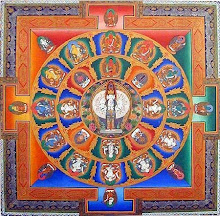




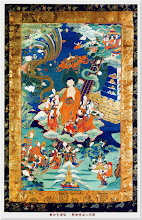

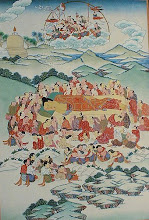


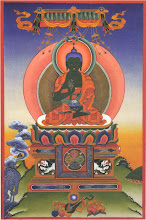




.jpg)

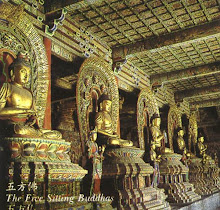













No comments:
Post a Comment